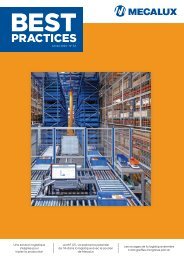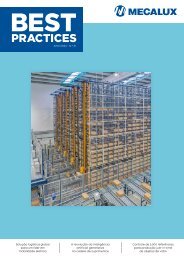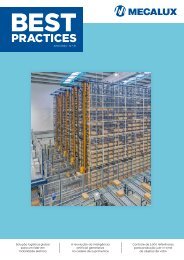Create successful ePaper yourself
Turn your PDF publications into a flip-book with our unique Google optimized e-Paper software.
Our experts I Software<br />
Logistics software: the cloud is the future<br />
Due to the continuous evolution of technology, our business<br />
landscape is changing at a high speed. One of the most important<br />
paradigm changes that has taken place in recent years has been<br />
caused by the software industry, with the creation of cloud-based<br />
applications. The logistics operations of companies have quickly<br />
adapted to this change, demanding that software applications be<br />
implemented which are increasingly compatible with the cloud.<br />
This paradigm shift has been led principally<br />
by the needs of the clients themselves,<br />
who in light of periods of crisis have opted<br />
for the type of solutions that only the cloud<br />
can offer: controlled expenditure, versatility<br />
and portability.<br />
However, it is also important to take into<br />
account the fundamental influence that the<br />
evolution of technology has brought upon<br />
us, which has made it possible to increase<br />
the connection capacity both within locally<br />
or mobile based communications. The<br />
social changes caused by globalisation, the<br />
sharing of information and the need for<br />
continuous access to information can also<br />
not be ignored.<br />
What do we mean when we talk<br />
about “the cloud”?<br />
There are many definitions for such a broad<br />
term and that, in the here and now, is part of<br />
almost any solution. Perhaps the one that comes<br />
closest says that it is a “consumer technology<br />
model” (applications, computing<br />
and storage) as a service through a network<br />
(usually the Internet), without the need for<br />
investments, securely and accessible from<br />
anywhere. This virtual set up makes data<br />
control and management more obtainable.<br />
Key advantages<br />
The main features that have led to this<br />
growth in cloud based solutions are:<br />
• Savings in the initial investment of<br />
any project of software deployment.<br />
The hardware infrastructure to house the<br />
solution is eliminated, and only the equipment<br />
in use is required. Nor is the initial cost<br />
of licensing necessary, since a payment by<br />
use and monthly service (SaaS) is applied.<br />
• Automatic and secure application<br />
updates. There is no need to spend several<br />
weeks to update a company’s applications,<br />
with problems that can result in loss of data,<br />
downtimes, etc. Updates are completely<br />
transparent and without any form of<br />
intervention.<br />
• Savings in maintenance costs. By<br />
adopting a SaaS model, the maintenance of<br />
the application and the housing of the solution<br />
lies with the provider. Who is the one<br />
responsible for hardware upkeep.<br />
146 <strong>Best</strong> <strong>Practices</strong>

















